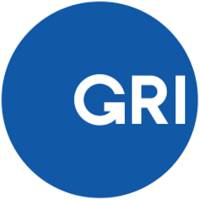Interoperability mapping between TNFD Disclosure Recommendations and GRI Standards now available

GRI and the Taskforce on Nature-related Financial Disclosures (TNFD) have today published a joint interoperability mapping resource that gives a detailed overview of alignment between the TNFD Disclosure Recommendations and metrics and the GRI Standards.
Over the past two years, the TNFD and GRI have worked closely together to support the development of each other's guidance – notably GRI input into the TNFD Recommendations published in September 2023, and TNFD input into the recently published GRI Biodiversity Standard.
Responding to feedback from market participants, the TNFD and GRI have developed a guidance document and correspondence table to help GRI’s 14,000 reporters globally align with the TNFD Recommendations, and assist TNFD adopters in their sustainability reporting according to GRI Standards.
The mapping underscores the high level of alignment achieved between the TNFD Recommendations and metrics and the GRI Standards reporting requirements and datapoints, including:
The use of consistent nature-related concepts and definitions, including the five direct drivers of nature and biodiversity loss, as defined by the Intergovernmental Science-Policy Platform on Biodiversity and Ecosystem Services (IPBES).The reference and incorporation of GRI’s materiality approach focusing on impactsin the TNFD Recommendations and guidance, following the TNFD’s flexible approach to materiality. The TNFD LEAP approach has been designed to help organizations report in line with both impact and financial materiality.All the disclosures in GRI 101: Biodiversity 2024 are reflected in the TNFD Recommendations. All of the TNFD Recommendations are reflected in the GRI Standards, except those exclusively covering nature-related risk and opportunity identification and assessment.Strong consistency between the TNFD core global disclosure metrics and the related metrics in the GRI Standards. A first mapping of the TNFD sector metrics and the relevant GRI Sector Standards also highlights consistency at this level.The TNFD LEAP approach – guidance for identifying and assessing nature-related issues – is referenced in GRI 101. It pinpoints where impacts on biodiversity are most likely to be present and significant and provides guidance on measuring changes in the state of nature.GRI 101 uses the TNFD definitions and criteria when considering an organization’s location in or near ecologically sensitive areas.
The ongoing collaboration of GRI with the TNFD has resulted in this detailed mapping tool, supporting thousands of organizations worldwide that already report their biodiversity impacts using the GRI Standards. This resource enables them to seamlessly integrate the TNFD recommendations, allowing for simplified, single-source reporting. GRI and the TNFD will continue to cooperate to prevent the need for double reporting and ensure organizations can transparently and accountably disclose their impacts.
Bastian Buck, Chief Standards Officer at GRI
Nature risks are business risks that should be measured and disclosed in a more robust manner. Having adopted the GRI 304: Biodiversity (2016) since 2017 and as the first Singapore company to publish disclosures aligned with the TNFD Recommendations in 2024, CDL understands the importance of measuring and managing our nature-related dependencies, impacts, risks and opportunities for long-term resilience. As we look towards adopting the new GRI 101: Biodiversity 2024 in our upcoming sustainability reports, we welcome the interoperability between TNFD and GRI to harmonize the global sustainability reporting landscape.
Esther An, Chief Sustainability Officer of City Developments Limited (CDL), TNFD Taskforce Member and GRI Supervisory Board Member
The release of today’s mapping from GRI and the TNFD will further support market participants needing, or wanting, to report on their nature-related dependencies and impacts leveraging GRI Standards and metrics and in line with the TNFD Recommendations. We look forward to continuing to work with GRI to provide clear, practical support to market participants in their internal assessment and external reporting needs.
Tony Goldner, Executive Director of the TNFD
Photo credit © GRI

